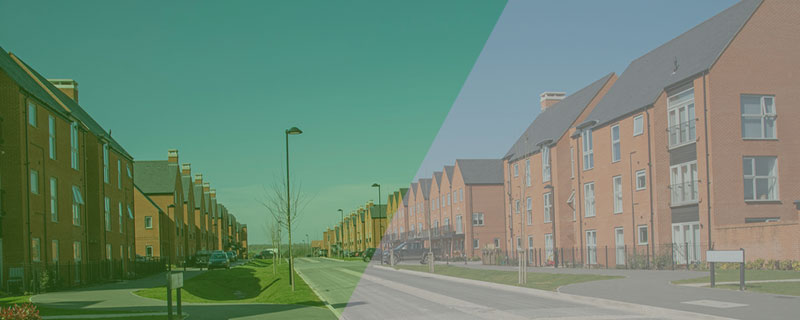Blurring the lines between green and grey
General NewsAs the UK Government seeks to address the nation’s housing crisis, ambitious plans are being put forward to curb the profits that landowners can make from selling green belt land for development.
In a move to meet Labour’s target of building 1.5 million new homes by 2030, ministers are considering radical changes to the existing planning framework, which could see local councils empowered to purchase green belt land at prices significantly below its market value.
A New Approach to Housing Development
The proposed changes stem from a need to tackle the escalating housing demand, particularly in high-pressure areas around London and the South East. England’s green belt, encompassing over 6,300 square miles or approximately 13% of the country’s land, has long been a protective barrier against urban sprawl. However, as housing targets become more aggressive, the focus has shifted towards utilising this land more effectively, including its so-called “grey belt” areas – land that is of lower environmental or agricultural value.
Under the new proposals, local authorities may gain the power to compulsorily purchase green belt land at a “benchmark” value. This value would be set below the typical market rate for similar plots outside the green belt, effectively limiting the windfall gains that landowners could expect when their land is earmarked for development. The Government’s rationale is clear: by curbing the financial incentives, the cost of land acquisition for housing projects could be reduced, thereby facilitating the construction of more affordable homes.
Balancing Development and Preservation
This initiative comes at a time when the Government is under pressure to deliver on its housing promises. Experts have pointed out that to meet these targets, development cannot be confined to brownfield sites or low-quality grey belt land. Significant greenfield development may be unavoidable, especially in areas where property prices are high and the need for housing is critical.
Despite these pressures, the Government is keen to emphasise that any development on green belt land will come with stringent conditions. For instance, it is proposed that 50% of the new homes on such sites must be classified as affordable, and that these developments must be supported by essential infrastructure.
However, this approach is not without its detractors. Environmental campaigners and countryside protection groups are likely to oppose any encroachment on the green belt, arguing that it risks undermining the very purpose of these protected areas. There are also concerns that the concept of “grey belt” land is being used to blur the lines, potentially leading to the degradation and development of land that is currently greenfield.
Compulsory Purchase and the Market
One of the most controversial aspects of the proposals is the potential use of compulsory purchase orders (CPOs) to acquire land. This legal mechanism, while powerful, is often seen as a last resort due to its complexity and the potential for lengthy disputes. Critics argue that by setting land values below market rates, the government may inadvertently disincentivise landowners from selling, leading to delays in the availability of land for housing.
A senior industry source has warned that the reliance on CPOs could backfire, suggesting that the process is too slow to meet the urgent need for land. They argue that rather than capping land values, the government should focus on clearly defining the requirements for affordable housing and allow the market to adjust accordingly.
Potential for Policy Manipulation
There are also fears that some landowners may manipulate the system by deliberately degrading their land to classify it as grey belt, thus making it eligible for development. This has raised alarms among environmental groups, who worry that such tactics could lead to the loss of valuable greenfield sites under the guise of urban expansion.
The countryside charity CPRE has expressed concerns that the government’s proposals might lead to a situation where grey belt policies are exploited, resulting in greenfield land being developed. They argue that more emphasis should be placed on utilising existing brownfield sites, which they believe could provide space for 1.2 million homes.
Final Thought
As the Government continues to consult on these proposals, the debate over the future of the green belt is set to intensify. While the need for more housing is undeniable, the challenge will be in balancing this demand with the preservation of England’s cherished rural landscapes. Whether the proposed capping of land profits will accelerate or hinder this process remains to be seen, but what is clear is that the stakes are high for all parties involved.
Independent policy institute, Curia will be launching their planning and housing programme in the Autum to deliver implementable solutions to assist with the delivery of the Government’s house building target.
Source: Chamber UK







Leave a Reply
Want to join the discussion?Feel free to contribute!